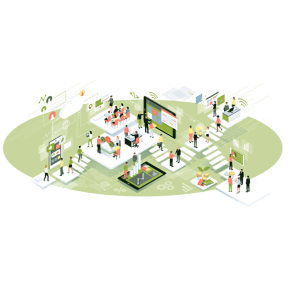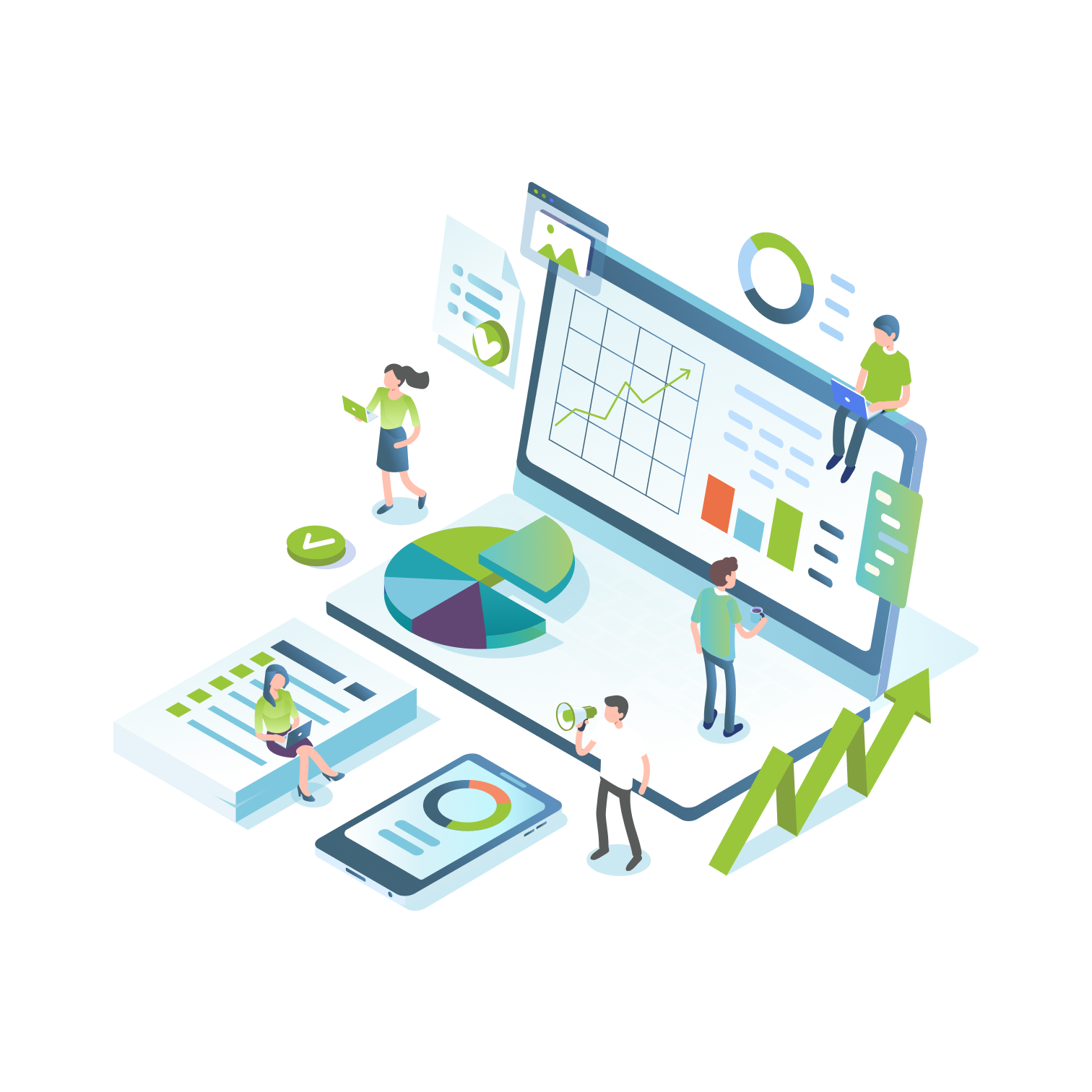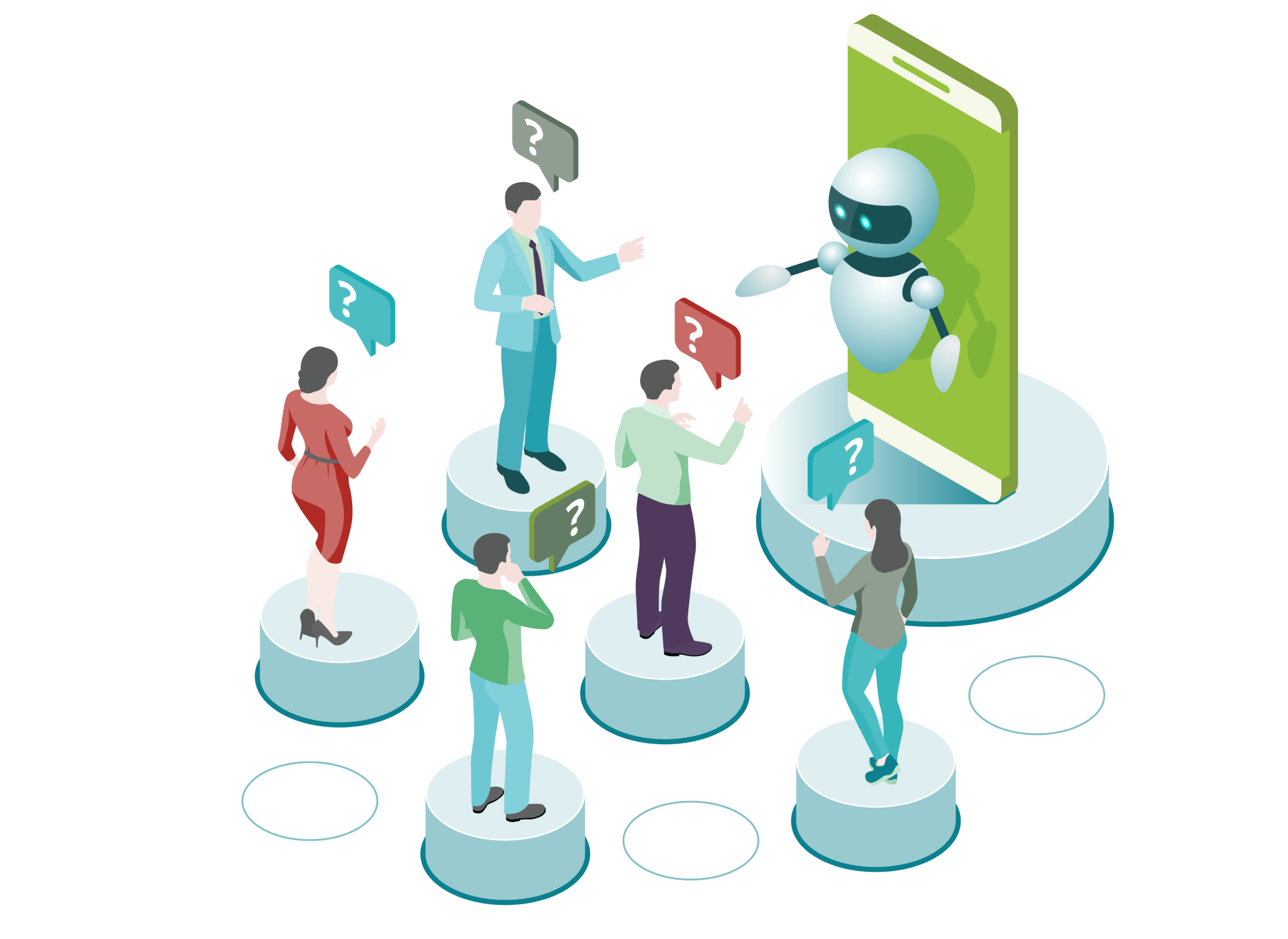Digital Twin and IoT

- IOT
- DIGITAL TWIN
- ONPREMISE
- INDUSTRY 4.0
- INTERNET OF THINGS
The Digital Twin is basically the digital representation or replica of a physical device, object, or system that is used to conduct experiments and run simulations before the final device or product is designed or built. The adoption and use of Digital Twins change the way technologies such as IoT, artificial intelligence, and analytics are optimized. With Digital Twins, increasingly complex devices and systems with interconnected data-processing capabilities can be optimized by creating so-called "what-if" scenarios and performing experiments under defined framework conditions.

The concept of the Digital Twins is not new: NASA began to put the concept into practice by creating full-scale mock-ups of early space capsules that are used on the ground to reflect and diagnose problems in orbit. These were later replaced by fully digital simulations. Finally, the concept became really widespread when Gartner ranked digital Twins among the top ten strategic technology trends in 2017. After that, there was no stop to the spread of the concept's adoption, which grew exponentially to become the buzzword of the fourth industrial revolution and an almost mandatory element.
How do Digital Twins work?
The physical object or system is actually converted by a computer program into a virtual model, using real data about the system as input coming from the sensors that acquire the data. The model is used to run various experiments, so-called "what-if" simulations. The Digital Twin simulates the physical object in real-time, providing insight into its performance and revealing potential problems. The Digital Twin can be designed based on the prototype, in this case, the twin provides feedback as the prototype is refined, and can also serve as a prototype before the physical version is built.
Application Areas
The Digital Twin concept is widespread and is spreading into new areas::
- Manufacturing: the simulation of manufacturing processes is now a very common and increasingly adopted methodology, which greatly supports manufacturers' optimization efforts.
- The automotive industry: another industrial segment in which Digital Twins are making significant progress as a result of cars equipped with telemetric sensors. The uptake of self-driving cars will further refine the technology.
- Healthcare: band-aid sized sensors send health information back to the Digital Twin, which is used to monitor and predict patient well-being.
Digital Twin & IoT
The Internet of Things and the Digital Twin is definitely changing the way the digital and physical worlds interact. The IoT provides connectivity and access to the intelligence of the physical world and is linked to the digital twin.
IoT is a key strategy to unlock the full potential of the Digital Twin of physical devices, operational processes, or personal tasks. A fundamental requirement of the Digital Twin is the ability to acquire data from devices, processes, and people/users using sensors and IoT.
The IoT enhances the efficiency of the Digital Twin through the use of connected smart devices. From now on, assumptions are replaced by real facts and data in real-time. Digital Twins can be used to predict different outcomes based on changing data. This is similar to the simulation scenarios often seen in science fiction movies, where a possible scenario is tested in the digital environment. With additional software and data analytics, Digital Twins can often optimize IoT deployments for maximum efficiency and help design professionals determine where devices should be placed or how they should function before they are physically deployed.
![]()
The better the digital twin can mimic the physical object, the more likely it is that efficiency improvements and other benefits can be achieved. For example, in manufacturing, where the machines are equipped with more instruments and sensors, the Digital Twins can better simulate their performance changes over time, which can help predict future performance and potential failures.
Share this post on social media:
Posts by Tag
- IoT (17)
- Smart cities (16)
- E-mobility (14)
- Energy Management (10)
- Mobility (9)
- Software development (9)
- Marketing automation (6)
- RPA (6)
- Robotic Process Automation (6)
- electric vehicles (6)
- Internet of Things (5)
- IoT solution (5)
- Marketing software (5)
- Smart Building (5)
- Business Intelligence (4)
- Custom applications (4)
- IoT platform (4)
- Uipath (4)
- electric charging (4)
- IoT devices (3)
- Properties (3)
- AI (2)
- BI (2)
- Montu (2)
- Multi-device functionality (2)
- Omnichannel (2)
- RPA Budapest (2)
- Smart city (2)
- UX design (2)
- app development (2)
- artificial intelligence (2)
- crm (2)
- crm software (2)
- electric charging station (2)
- machine learning (2)
- marketing campaign (2)
- optima (2)
- API Testing (1)
- Agriculture (1)
- Automated Testing (1)
- BYOD (1)
- EV (1)
- Energy Communities (1)
- Event insights (1)
- Event report (1)
- Green IoT (1)
- HR (1)
- IT Outsourcing (1)
- ML (1)
- Power BI (1)
- Resource Management (1)
- Smart Home (1)
- Smart Office (1)
- TaaS (1)
- UX/UI Design (1)
- Xamarin (1)
- cloud (1)
- cloud computing (1)
- cross-selling (1)
- data driven marketing (1)
- digital twin (1)
- dynamic customer segmentation (1)
- esg (1)
- inbound marketing (1)
- industry 4.0 (1)
- onprem (1)
- onpremise (1)
- scalability (1)
- software robot (1)
- testing as a service (1)
- upselling (1)
Recent Posts
Read On

- RPA
- ROBOTIC PROCESS AUTOMATION
The essential role of Robotic Process Automation (RPA) in Lean Management
Even if we live in a world where change is crucial for next-level developments, standardization is still necessary to save the customary quality of products or services. Lean management focuses on providing the highest quality of outputs with the lowest failure rate. It is precisely why RPA robots...

- RPA
- RPA BUDAPEST
- UIPATH
- ROBOTIC PROCESS AUTOMATION
Why is it worth using Robotic Process Automation (RPA)?
We’ve already mentioned that process automation became an essential part of businesses to maintain or increase competitiveness on the market. Robots are widely implemented in different kind of industries - such as Automotive, Finance, Banking, Manufacturing, Retail, Healthcare and so much more - to...

- RPA
- SOFTWARE ROBOT
- RPA BUDAPEST
- UIPATH
- ROBOTIC PROCESS AUTOMATION
About Robotic Process Automation (RPA)
Easier than you think...
Robots are widely used in the software industry and are used for the same purpose as in the manufacturing industry: to free people from repetitive monotonous tasks while increasing efficiency and reducing errors.



